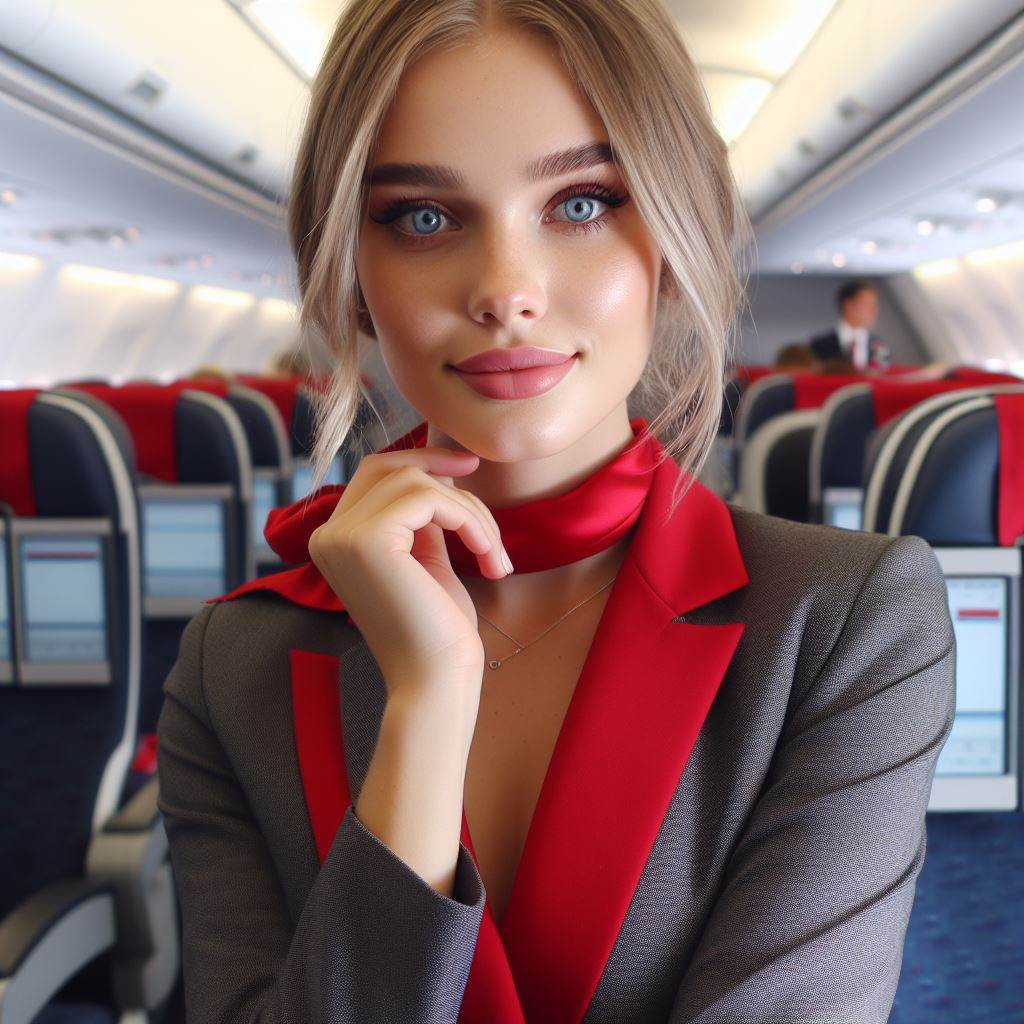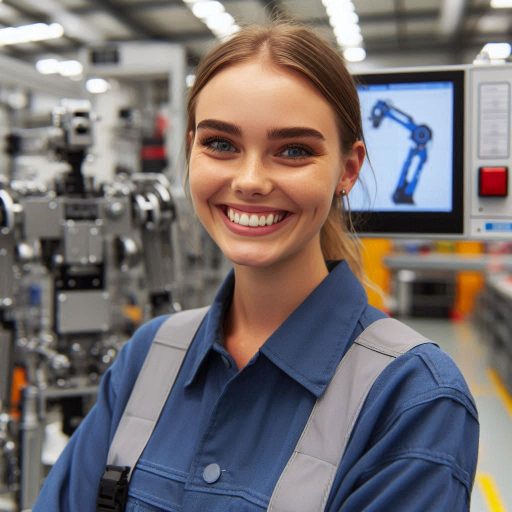Introduction
A. Importance of flight attendant uniforms
Flight attendant uniforms play a crucial role in the aviation industry, representing professionalism and embodying the airline’s brand image.
In Australia, these uniforms have gone through significant transformations over the years.
This blog section will provide an overview of the evolution of flight attendant uniforms in Australia and highlight key points to be discussed further.
B. Overview of the evolution of flight attendant uniforms in Australia
Initially, flight attendant uniforms in Australia were simple and practical, designed to ensure comfort and functionality.
They typically consisted of modest skirts or dresses for female flight attendants, paired with matching blazers or jackets.
Male flight attendants wore suits or trousers with shirts and ties, reflecting a more formal and professional appearance.
C. Key points to be discussed in the blog post
As the airline industry evolved and competition increased, airlines began to focus more on branding and marketing.
This led to a shift in flight attendant uniforms, with a greater emphasis on style, fashion, and reflecting the airline’s image.
Uniforms became more fashionable and stylish, incorporating vibrant colors, unique patterns, and modern designs.
The evolution of flight attendant uniforms in Australia also witnessed changes in fabric choices and accessories.
Lightweight, wrinkle-resistant materials were introduced, ensuring comfort during long flights.
Accessories like scarves, hats, and gloves were added, providing an elegant touch to the overall look.
Furthermore, the evolution of flight attendant uniforms also reflected societal changes and cultural influences.
Uniforms started to incorporate indigenous motifs or elements, showcasing cultural diversity and creating a sense of inclusivity.
In summary, flight attendant uniforms hold significant importance in the aviation industry, portraying professionalism and serving as an extension of the airline’s brand.
The evolution of flight attendant uniforms in Australia has seen a transition from practicality to fashion, incorporating unique designs, colors, and cultural influences.
This blog post will delve deeper into these key points to explore the fascinating journey of flight attendant uniforms in Australia.
Early years (1920s – 1950s)
A. Description of the first flight attendant uniforms
- The first flight attendant uniforms in Australia were inspired by fashion trends of the time.
- They typically consisted of knee-length skirts, tailored jackets, and stylish hats.
- Uniform colors varied, but the most common were navy blue and brown.
- The uniforms were designed to reflect elegance and sophistication, reflecting the glamorous world of aviation.
B. Influence of military and nurse uniforms on early designs
- During World War II, flight attendant uniforms were influenced by military uniforms.
- Uniforms often incorporated military-style hats and epaulets, giving a sense of authority and discipline.
- Nurse uniforms also influenced early designs, emphasizing cleanliness and professionalism.
- Flight attendants were seen as caretakers, responsible for the safety and well-being of passengers.
C. Emphasis on professionalism and functionality
- Early flight attendant uniforms prioritized professionalism and functionality.
- They were designed to be practical and comfortable, allowing ease of movement and performance of duties.
- Uniforms often included features like multiple pockets for storage and easy access to necessary items.
- Flight attendants were expected to maintain a polished appearance while efficiently carrying out their responsibilities.
- The uniforms projected an image of reliability and competence, reflecting the evolving role of flight attendants.
As the aviation industry grew and evolved, so did the flight attendant uniforms in Australia.
The early years, spanning from the 1920s to the 1950s, saw the emergence of distinct designs that were influenced by various factors.
Read: Data Analysis Techniques in Logistics
The Jet Age (1960s – 1970s)
A. Introduction of More Fashionable and Glamorous Uniforms
The 1960s brought significant changes to flight attendant uniforms in Australia.
Your Personalized Career Strategy
Unlock your potential with tailored career consulting. Get clear, actionable steps designed for your success. Start now!
Get StartedAirlines started to prioritize fashion and glamour, leading to the introduction of more stylish and attractive uniforms.
During this period, airlines recognized the importance of image and sought to project a more fashionable and modern appearance.
Uniforms became more than just practical clothing; they became a marketing tool to attract passengers and promote the airline’s brand.
B. Shift Towards a “Glamorous Stewardess” Image
The concept of the “glamorous stewardess” emerged during the jet age.
Flight attendants were seen as elegant and sophisticated women, embodying the epitome of style and grace. Their uniforms reflected this image.
Airlines began to focus on creating a refined and fashionable look for their flight attendants.
Uniforms were designed to enhance the femininity of the flight attendants, with tailored dresses, fitted blazers, and stylish accessories such as hats, gloves, and scarves.
The emphasis on glamour was further highlighted by the use of luxurious fabrics such as silk, chiffon, and wool.
Colors also played a significant role, with vibrant blues, reds, and greens replacing the traditional navy and gray.
C. Influence of Fashion Trends and Cultural Changes on Uniform Designs
Fashion trends and cultural changes of the 1960s and 1970s greatly influenced the design of flight attendant uniforms in Australia.
The “Swinging Sixties” brought a revolution in fashion, which was reflected in the airline industry.
The popularity of mod fashion, characterized by bold patterns, geometric shapes, and mini skirts, found its way into flight attendant uniforms.
Airlines incorporated these elements, adapting them to create unique and eye-catching designs.
Moreover, the cultural changes that were taking place during this era, such as the women’s liberation movement, also had an impact on uniform designs.
Airlines aimed to strike a balance between projecting a glamorous image and acknowledging the changing roles and expectations of women in society.
Stand Out with a Resume That Gets Results
Your career is worth more than a generic template. Let us craft a resume and cover letter that showcase your unique strengths and help you secure that dream job.
Get HiredEssentially, the jet age marked a significant shift in flight attendant uniforms in Australia.
Airlines recognized the importance of fashion and glamour, leading to the introduction of more stylish and attractive uniforms.
The concept of the “glamorous stewardess” emerged, with uniforms designed to enhance femininity.
Fashion trends and cultural changes greatly influenced the designs during this period, reflecting the dynamic spirit of the 1960s and 1970s.
Read: Job Outlook for Supply Chain Experts
Deregulation era (1980s – 1990s)
In the 1980s and 1990s, the airline industry underwent a dramatic transformation as a result of deregulation.
This brought about significant changes in flight attendant uniforms in Australia.
A. Transition to more casual and practical uniforms
- Uniforms became less formal and more practical to adapt to the changing needs of the industry.
- Flight attendants started wearing comfortable fabrics and relaxed designs for ease of movement.
- The focus shifted from style and elegance to functionality and efficiency.
- Short-sleeved shirts, slacks, and knee-length skirts became common for both male and female flight attendants.
B. Incorporation of company branding and logos
- Airlines saw the opportunity to use their flight attendants’ uniforms as a means of branding and promoting their image.
- Logos and insignias of the respective airlines were prominently displayed on the uniforms.
- This helped create a sense of unity and identity among the flight attendants and reinforced the airline’s brand recognition.
- Color schemes and design elements were carefully chosen to align with the airline’s overall branding efforts.
C. Reflecting the changing perception of flight attendants as service professionals
- Flight attendants began to be perceived as service professionals rather than merely glamorous figures.
- Designers tailored uniforms to reflect the shift in perception and emphasize the professionalism of the job.
- Neatness, cleanliness, and attention to detail became important aspects of the uniform design.
- Passengers expected flight attendants to project a polished and helpful image as representatives of their airlines.
The deregulation era brought about significant changes in the appearance of flight attendants in Australia.
Uniforms became more casual and practical, incorporating company branding and logos to promote the airline’s image.
Flight attendants’ uniforms now reflect the changing perception of them as service professionals.
Read: Green Logistics: Analysts’ New Focus

Modern Era (2000s – present)
In the modern era, airlines have shifted their focus towards prioritizing the comfort and flexibility of flight attendant uniforms.
This shift is in response to the demands of the fast-paced aviation industry and the need for flight attendants to perform their duties efficiently.
A. Focus on comfort and flexibility in uniform designs
- Designers emphasize maximum comfort for flight attendants in modern uniforms, especially during long flights.
- Airlines understand that comfortable uniforms contribute to the overall well-being and performance of their flight attendants.
- Manufacturers use lightweight, breathable materials for uniforms, enabling easy movement and ventilation for wearers.
- Tailors craft garments for optimal fit and flexibility, ensuring comfort and functionality during onboard tasks.
- The introduction of stretch fabrics has revolutionized uniform designs by allowing greater freedom of movement.
- Flight attendants no longer need to compromise style for comfort, as modern uniforms combine both elements effectively.
B. Emphasis on representing diversity and inclusivity
- In recent years, there has been a significant focus on representing diversity and inclusivity in flight attendant uniforms.
- Airlines aim to reflect the multicultural society of Australia and promote inclusiveness within their organizations.
- Uniforms now come in a wider range of sizes, accommodating diverse body shapes and sizes.
- Colors, patterns, and accessories are carefully selected to suit various skin tones and cultural backgrounds.
- By embracing diversity through their uniform designs, airlines communicate a message of acceptance and equality.
- This shift towards inclusivity sends a powerful message to both passengers and employees that everyone is welcome on board.
C. Integration of technological advancements in fabric and design
- Advancements in technology play a crucial role in modern flight attendant uniforms.
- Smart fabrics are incorporated into the design to provide functionality and convenience.
- Anti-wrinkle and stain-resistant materials help flight attendants maintain a polished and professional appearance.
- Moisture-wicking fabrics are used to keep flight attendants dry and comfortable throughout their shifts.
- Eco-friendly and sustainable materials are also favored to align with the industry’s growing commitment to environmental responsibility.
- Technological advancements have made it possible to integrate features like built-in communication devices or LED lighting for enhanced visibility.
Ultimately, the evolution of flight attendant uniforms in Australia has witnessed significant changes in the modern era.
Airlines now prioritize comfort, flexibility, and inclusivity when designing uniforms.
They utilize technological advancements in fabric and design to enhance functionality and provide a better overall experience for both flight attendants and passengers.
The modern era of flight attendant uniforms reflects the evolving needs and values of the aviation industry.
Transform Your LinkedIn for Maximum Impact
Elevate your professional brand with a LinkedIn profile that attracts recruiters, showcases your expertise, and maximizes opportunities. Stand out in your industry with a profile built for success.
Boost ProfileRead: Risk Management in Supply Chains
Gain More Insights: Salary Insights: Aussie Flight Attendant Earnings
Cultural and Regional Influences
A. Variation in uniforms across different Australian airlines
Flight attendant uniforms in Australia showcase a significant variation across different airlines.
Each airline has its unique style and design, reflecting its brand identity.
Qantas, Australia’s flag carrier, sets the trend with its iconic and classic uniform that represents its longstanding history in aviation.
The Qantas uniform has evolved over time, incorporating modern elements while maintaining a timeless elegance.
Virgin Australia, on the other hand, takes a more contemporary approach with its uniforms.
The airline’s design focuses on clean lines and a modern color palette, creating a fresh and youthful image.
Other regional airlines like Jetstar and Tigerair have also established their distinct uniform styles.
Jetstar reflects a casual and relaxed vibe, suited to their low-cost carrier image.
Meanwhile, Tigerair opts for a more vibrant and playful look, resonating with its value-based services.
Overall, the variation in uniforms across Australian airlines allows each brand to communicate its unique identity and personality.
B. Incorporation of indigenous artwork and cultural elements
In recent years, there has been a growing trend of incorporating indigenous artwork and cultural elements into flight attendant uniforms in Australia.
This trend reflects the airline industry’s recognition and celebration of Indigenous Australian culture.
Qantas takes a lead in this area by partnering with Indigenous artists to create stunning uniform designs.
These designs often feature distinctive Aboriginal patterns and artwork, highlighting the rich history and heritage of the land.
By incorporating indigenous artwork, airlines aim to promote cultural diversity and foster a sense of national pride. It also serves as a way to support and engage with local communities.
C. Comparison of flight attendant uniforms in different states of Australia
While flight attendant uniforms may differ slightly across various states in Australia, there are certain common elements that symbolize the country as a whole.
In Western Australia, flight attendants often wear uniforms that represent the region’s natural beauty.
These uniforms incorporate colors and patterns inspired by the vibrant landscapes and indigenous art of the area.
In the tropical state of Queensland, uniforms take on a more relaxed and casual style.
They tend to feature lightweight fabrics and bright colors, reflecting the laid-back lifestyle associated with the region.
New South Wales, home to Australia’s largest city, Sydney, opts for a more cosmopolitan and sophisticated uniform design.
These uniforms often exhibit sleek lines, modern cuts, and timeless elegance to match the urban atmosphere.
Victoria, with its cultural capital, Melbourne, showcases flight attendant uniforms that exude a sense of creativity and avant-garde fashion.
These uniforms often experiment with unique designs and incorporate elements from the city’s thriving arts and fashion scene.
In summary, flight attendant uniforms in different states of Australia vary to reflect the unique cultural and regional influences of each area.
These uniforms showcase the diversity and beauty of Australia while representing the specific characteristics of each state.
You Might Also Like: Fuel Efficiency Tips for Truck Drivers
Conclusion
A. Recap of the evolution of flight attendant uniforms in Australia
Flight attendant uniforms in Australia have transformed over the years, reflecting changing fashion trends and cultural values.
B. Reflection on the changing roles and perceptions of flight attendants
Flight attendants have evolved from merely serving passengers to becoming brand ambassadors for airlines.
C. Importance of uniforms in shaping the airline industry’s image
Uniforms play a crucial role in shaping the airline industry’s image, making it more professional and customer-focused.
Lastly, the evolution of flight attendant uniforms in Australia showcases the ever-changing nature of the airline industry.
As flight attendants’ roles and perceptions have shifted, their uniforms have also transformed to represent these changes.
Uniforms not only serve a functional purpose but also play a vital role in shaping the overall image of airlines.
As airlines strive to provide exceptional customer service, their uniforms contribute to creating a professional and customer-centric environment.
The continued evolution of flight attendant uniforms reflects the industry’s commitment to adapting to societal changes and remaining relevant in a continuously evolving world.




